Selecting the appropriate vlogging camera is crucial for content creators aiming to produce high-quality videos that engage their audience. The right equipment enhances video clarity, audio fidelity, and overall production value, setting your content apart in a competitive landscape.
This guide provides an in-depth analysis of top vlogging cameras for 2025, highlighting key features, pros and cons, and suitability for various user levels. Whether you’re a beginner or a professional, this resource will assist you in making an informed decision tailored to your specific needs.
How to Choose the Best Vlogging Camera
Key Features to Look For
Key Features to Look For
High-resolution video is essential for capturing detailed and crisp footage.
Most modern vlogging cameras offer at least 4K resolution, ensuring your content meets current viewing standards.
Autofocus and Image Stabilization
Reliable autofocus keeps your subject sharp, while effective image stabilization minimizes camera shake, resulting in smooth and professional-looking videos.
Audio Quality and Microphone Inputs
Clear audio is as important as video quality. Cameras with external microphone inputs allow for enhanced sound recording, crucial for maintaining viewer engagement.
Different Types of Vlogging Cameras
Mirrorless Cameras
Mirrorless cameras offer interchangeable lenses and superior image quality, making them versatile for various shooting scenarios.
Compact Cameras
Compact cameras are lightweight and portable, ideal for vloggers who need mobility without sacrificing quality.
Action Cameras
Designed for durability, action cameras are perfect for capturing high-intensity activities, providing robust build quality and wide-angle lenses.
Smartphones and Accessories
Modern smartphones, equipped with advanced cameras and a range of accessories, can serve as convenient vlogging tools for creators seeking simplicity and portability.
Top Picks for Vlogging Cameras in 2025
Best Overall Vlogging Camera: Sony ZV-1 II
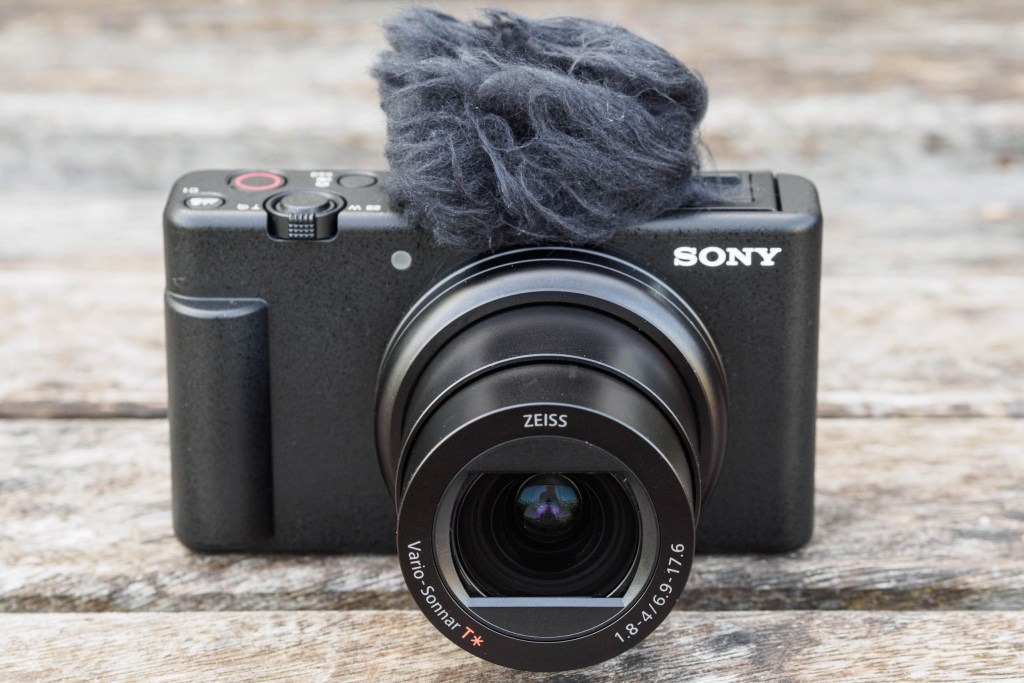
Key Features of the Sony ZV-1 II
The Sony ZV-1 II boasts a 1-inch sensor, 4K video recording, and a fully articulating touchscreen, tailored specifically for content creators.
Pros and Cons
Pros: Compact design, excellent autofocus, and user-friendly interface.
Cons: Limited battery life and absence of a headphone jack.
Best Budget-Friendly Camera: Canon PowerShot V10
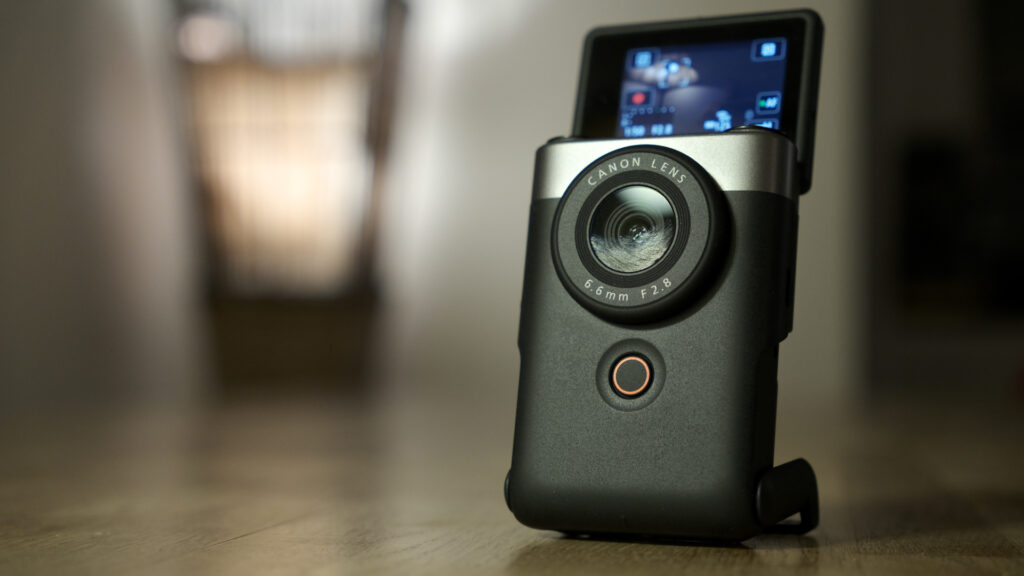
Why It’s Budget-Friendly
The Canon PowerShot V10 offers a cost-effective solution without compromising essential features, including 4K recording and a built-in stand, making it accessible for entry-level vloggers.
Pros and Cons
Pros: Affordable, user-friendly, and compact.
Cons: Fixed lens and limited manual controls.
Best Camera for Beginners: DJI Pocket 2
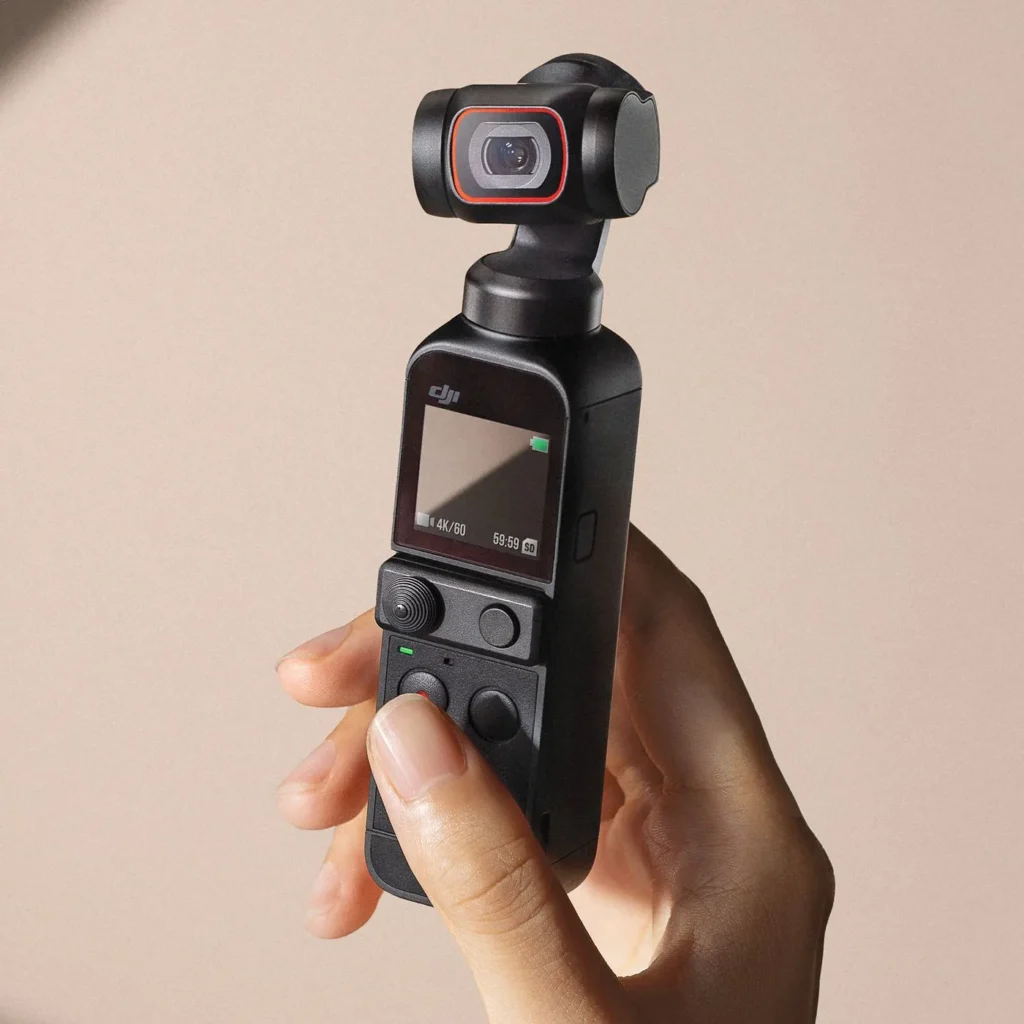
Features for Ease of Use
The DJI Pocket 2 integrates a stabilized camera and gimbal in a compact form, offering intelligent shooting modes that simplify the vlogging process for newcomers.
Recommended Accessories
Consider adding the wireless microphone and tripod mount to enhance audio quality and shooting versatility.
Best Action Camera: GoPro Hero 12 Black
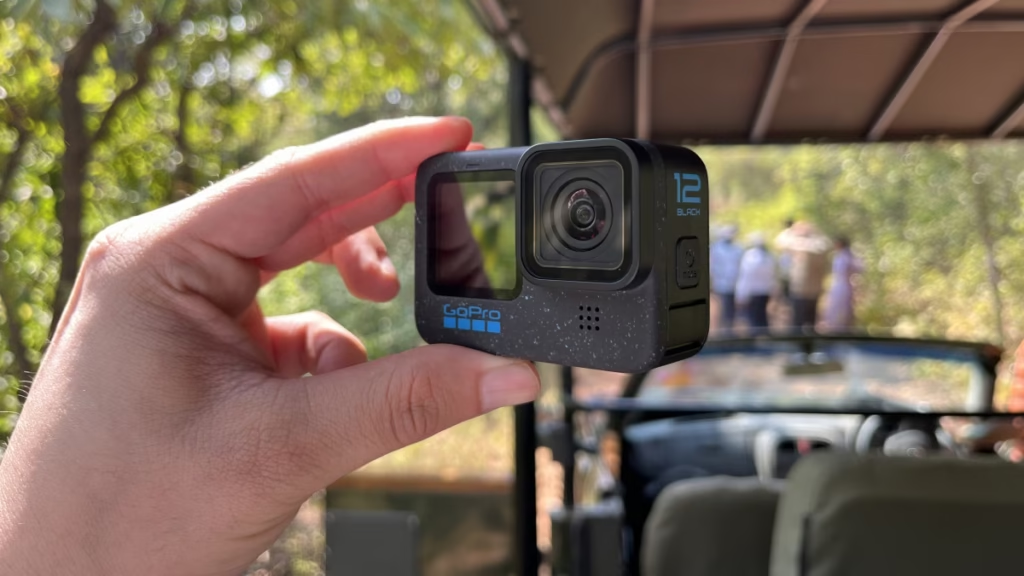
Durability and Features
The GoPro Hero 12 Black is renowned for its rugged design, waterproof capabilities, and advanced stabilization, making it ideal for capturing action-packed footage.
Who Should Choose This Option?
This camera is perfect for adventure vloggers and those requiring a durable device for extreme conditions.
Best Camera for Professionals: Panasonic Lumix GH6
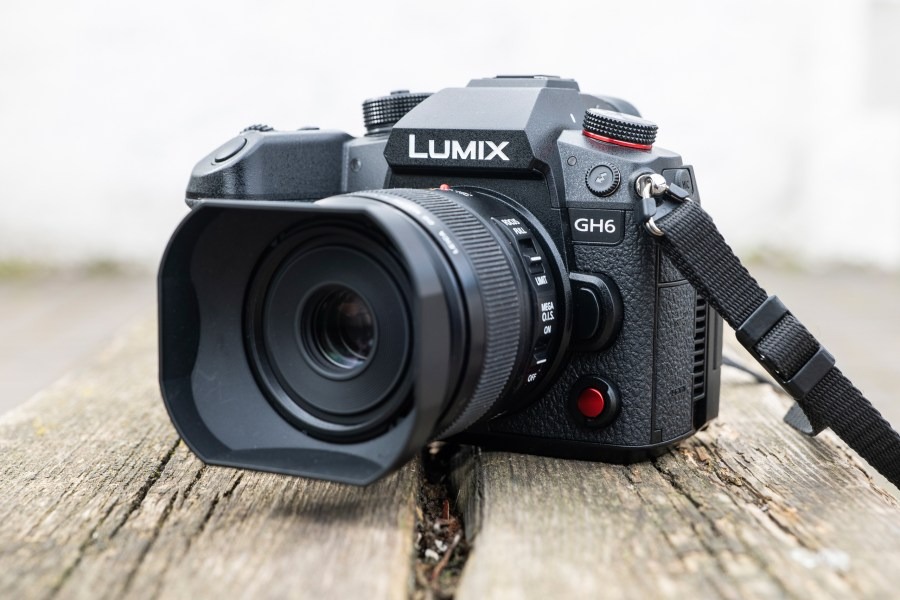
Advanced Features for Experts
The Panasonic Lumix GH6 offers high-resolution 5.7K video, extensive dynamic range, and professional-grade codecs, catering to the demands of seasoned videographers.
Best Use Cases
Ideal for professional content creators seeking top-tier video quality and extensive customization
For a visual overview of the top vlogging cameras, you might find this video helpful:
Detailed Reviews of the Top Cameras
Sony ZV-1 II: The Best Overall Choice
Key Specifications
- Sensor: 1-inch stacked CMOS
- Resolution: 20.1 MP
- Video: 4K at 30fps, 1080p at 120fps
- Lens: 24-70mm equivalent, f/1.8-2.8
- Weight: 294g
| Pros | Cons |
|---|---|
| Exceptional autofocus performance. | Limited battery life. |
| Compact and lightweight design. | No headphone jack. |
| Fully articulating touchscreen for vlogging ease. |
Best Use Cases
Ideal for creators prioritizing portability and high-quality 4K video. The Sony ZV-1 II suits vloggers creating lifestyle, beauty, or travel content.
Canon PowerShot V10: Best for Budget-Conscious Creators
Key Specifications
- Sensor: 1-inch CMOS
- Resolution: 20 MP
- Video: 4K at 30fps
- Lens: Fixed wide-angle lens
- Weight: 211g
| Pros | Cons |
|---|---|
| Affordable for beginners. | Fixed lens limits flexibility. |
| Integrated stand for stationary shots. | Basic manual control options. |
| Compact form factor for travel-friendly vlogging. |
Who Should Buy This Camera?
Perfect for entry-level vloggers or casual creators looking for a cost-effective yet functional vlogging camera.
DJI Pocket 2: Ideal for New Vloggers
Key Specifications
- Sensor: 1/1.7-inch CMOS
- Resolution: 64 MP stills, 4K video
- Stabilization: 3-axis gimbal
- Weight: 117g
| Pros | Cons |
|---|---|
| Built-in gimbal for smooth footage. | Small sensor limits low-light performance. |
| Compact and lightweight. | Limited accessory compatibility without adapters. |
| Intelligent shooting modes, like ActiveTrack. |
Use Cases for Beginners
An excellent choice for vloggers who need simplicity and stabilization. Ideal for travel, daily vlogs, or quick shoots.
GoPro Hero 12 Black: The Action Vlogging Powerhouse
Key Specifications
- Sensor: 1/1.9-inch CMOS
- Video: 5.3K at 60fps, 4K at 120fps
- Stabilization: HyperSmooth 6.0
- Durability: Waterproof to 33 feet (10m)
| Pros | Cons |
|---|---|
| Unmatched stabilization for action shots. | Short battery life during high-resolution shooting. |
| Durable, rugged build. | Smaller screen may be challenging for editing on the go. |
| Multiple frame rates and resolutions for creative flexibility. |
Best Use Cases
Ideal for adventure vloggers or those capturing high-intensity activities like sports, underwater scenes, or fast-paced travel.
Panasonic Lumix GH6: The Professional’s Choice
Key Specifications
- Sensor: Micro Four Thirds
- Resolution: 25.2 MP
- Video: 5.7K at 60fps, 4K at 120fps
- Dynamic Range: 13+ stops with V-Log
| Pros | Cons |
|---|---|
| Superior video quality with high-resolution recording. | Expensive for beginners. |
| Professional-grade customization options. | Heavier than most vlogging cameras. |
| Dual card slots for extended recording sessions. |
Use Cases for Professionals
Designed for advanced creators producing cinematic content, documentaries, or commercial videos requiring unparalleled quality.
Accessories to Enhance Your Vlogging Experience
External Microphones
Best Options for Crisp Audio
When it comes to vlogging, clear and professional-sounding audio is crucial for keeping your audience engaged. The built-in microphones on most cameras simply aren’t enough to deliver the sharp, crisp sound needed for high-quality vlogs. That’s where external microphones come in.
- Rode VideoMic Pro+: Offers excellent sound capture with a supercardioid pattern, minimizing background noise.
- Shure MV88: Compact and portable, this microphone provides great audio quality and is compatible with both iOS and Android devices.
- Blue Yeti USB Mic: Ideal for stationary vlogging or recording voiceovers, this mic offers crystal-clear sound and multiple pattern selections.
Investing in an external microphone can greatly enhance the quality of your vlog, making it sound more professional.
Lighting Equipment
Ring Lights and Portable Options
Proper lighting is essential for creating high-quality vlogs, especially if you’re shooting in low-light environments. Ring lights are a popular choice among vloggers because of their even light distribution, which minimizes harsh shadows.
- Neewer 18-inch Ring Light Kit: A popular choice, offering adjustable brightness and color temperature, perfect for beauty and makeup vlogs.
- Lume Cube 2.0: A versatile, portable option, ideal for travel vloggers. It offers powerful, adjustable lighting in a compact size.
- Godox SL-60W: Provides soft, even lighting with adjustable intensity, perfect for indoor vlogging setups.
Lighting is one of the most important factors in improving your video quality, and having the right equipment ensures that you look great on camera.
Tripods and Stabilizers
Handheld Gimbals vs. Stationary Tripods
Stabilization is key for smooth footage. While tripods are great for stationary shots, handheld gimbals give you flexibility and movement while maintaining steady shots.
- DJI Ronin-S: This gimbal is perfect for capturing cinematic footage while moving, providing advanced stabilization technology.
- Manfrotto Compact Action Tripod: A great option for stationary vlogging. It’s compact, easy to set up, and highly durable.
- Joby GorillaPod: Flexible and portable, this tripod can be wrapped around objects, providing a unique way to capture shots in various environments.
Choosing between a gimbal and a tripod comes down to whether you prefer stationary or dynamic shots. For more fluid and moving vlogs, a gimbal is the way to go, while a tripod offers great stability for traditional, stationary videos.
Tips for Better Vlogging with Any Camera
Optimizing Your Camera Settings
No matter what camera you’re using, adjusting the settings for your environment can make a huge difference.
For instance, increasing the ISO for low-light situations or adjusting the white balance for more accurate colors will improve the overall video quality.
Make sure to experiment with settings like aperture, shutter speed, and frame rates to optimize your video for the desired look.
Composing Engaging Shots
Composition is everything when it comes to vlogging. To keep your audience’s attention, focus on framing your shots in a way that adds context and engages viewers.
- Use the Rule of Thirds to create a more balanced and visually appealing composition.
- Experiment with different angles: Change the height or orientation of the camera to add variety to your shots.
- Keep your background clean: Make sure it doesn’t distract from your main subject.
By carefully thinking about shot composition, you can create dynamic and engaging videos.
Editing and Post-Production Tips
Editing is where you can elevate your vlog to the next level. Here are some tips:
- Use editing software like Adobe Premiere Pro or Final Cut Pro for more professional editing capabilities.
- Add B-roll footage to supplement your narrative. This can include close-ups, location shots, or extra context for your story.
- Keep your cuts clean and natural: Avoid jarring transitions or overuse of jump cuts, which can disrupt the flow of your vlog.
A polished edit can take a simple video to professional-grade quality.
Conclusion
Final Thoughts: Finding the Right Camera for Your Needs
Choosing the right vlogging camera depends on your content style, budget, and level of experience.
Whether you need a portable option for casual vlogging or a professional camera for cinematic quality, there’s a camera out there for you.
Prioritize features like ease of use, video resolution, and audio capabilities when making your decision.
Where to Buy Your Ideal Camera
Once you’ve narrowed down your options, you can find the best vlogging cameras on online retailers like Amazon, B&H Photo, and Best Buy, where you’ll also find helpful customer reviews to guide your purchase.
FAQs
What’s the Best Budget Vlogging Camera?
For budget-conscious creators, the Canon PowerShot V10 and DJI Pocket 2 are excellent choices. Both deliver impressive video quality without breaking the bank, making them ideal for beginners.
Do I Need a 4K Camera for Vlogging?
While 4K cameras offer superior image quality, they aren’t strictly necessary for vlogging. For most creators, a 1080p camera can provide excellent video quality. However, 4K gives you more flexibility in post-production, allowing for cropping and more detailed footage.
How Important is Audio Quality for Vlogging?
Audio quality is just as important, if not more so, than video quality. Clear sound ensures that your audience can understand you, and it enhances the overall professionalism of your vlogs. Invest in an external microphone to capture better audio.
